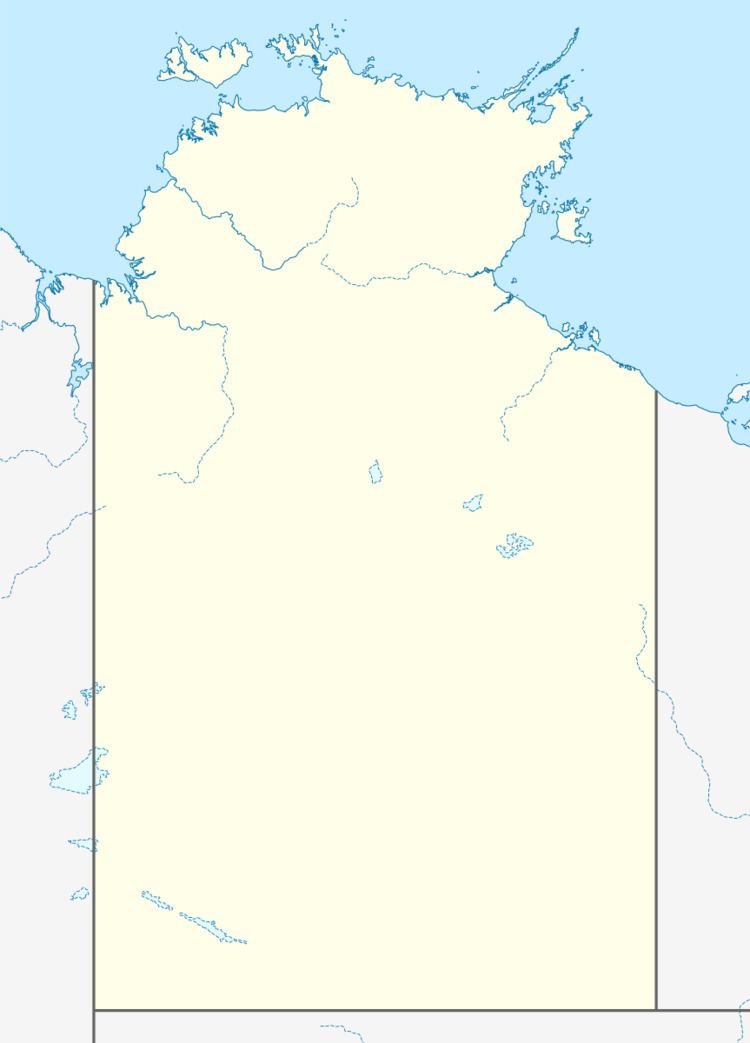Airport type Military/public 14/32 2,744 Code KTR | Elevation AMSL 443 ft / 135 m Address Tindal NT 0853, Australia Elevation 145 m | |
 | ||
Website www.airforce.gov.auwww.ktc.nt.gov.au | ||
1960 s raaf base tindal inc rnzaf canberra raf vulcan and raaf mirage
RAAF Base Tindal (IATA: KTR, ICAO: YPTN) is a Royal Australian Air Force (RAAF) air base located 8 nautical miles (15 km; 9.2 mi) east southeast of the town of Katherine, Northern Territory. It is currently home to No. 75 Squadron and a number of non-flying units, and also hosts the Katherine Tindal Civilian Airport. First constructed in 1942, it was refurbished in the late 1960s as a "bare base" capable of being utilised when required. It was opened as a permanently manned RAAF base in 1989.
Contents
- 1960 s raaf base tindal inc rnzaf canberra raf vulcan and raaf mirage
- Pitch black 2010 41wg at raaf base tindal and timber creek
- History
- Units
- References
Pitch black 2010 41wg at raaf base tindal and timber creek
History
Tindal was initially built for the RAAF as Carson's Airfield in 1942. The airfield was constructed by the US Army's 43rd Engineer General Service Regiment. Its purpose was to provide a base for Consolidated B-24 Liberator heavy bombers that could strike at Japanese targets in Papua New Guinea and the Dutch East Indies, but the turning tide of the war rendered this unnecessary and no aircraft were deployed there before the cessation of hostilities. In 1946, the airfield was renamed in honour of Wing Commander Archibald (Archie) Tindal, the first RAAF member killed in action on the Australian mainland during World War II; he died while manning a machine gun against Japanese raiders bombing Darwin on 19 February 1942, and was buried at the Adelaide River war cemetery.
In 1959, the Chief of the Air Staff, Air Marshal Sir Frederick Scherger, proposed building a second airfield in the Darwin area. Like Tindal, he had been in Darwin when it was bombed by the Japanese in 1942, and believed that Australia's defences in the north needed to be strengthened. Following a survey, Tindal was selected in May 1963 as being close enough to RAAF Base Darwin to afford mutual protection, but far enough from the coast to be defensible and to avoid the effects of tropical cyclones. Other factors, such as being outside the projected nuclear fall-out zone should Darwin be targeted by a nuclear weapon, as well as an adequate water supply and suitable road and rail connections, also influenced the decision.
Conceived as an "Un-Manned Operational Base" (later to be known as a "bare base"), Tindal was to have no permanent staff and very few buildings. Essentially it would consist of a runway, taxiways and hardstanding along with the minimal infrastructure, such as electricity and water, to permit it to be activated when required. No. 5 Airfield Construction Squadron commenced work in 1964 and the 2,743-metre (8,999 ft) runway was completed in March 1967, at a cost of $7,000,000. The base was ready to support RAAF units by early 1968, though work expanding its facilities continued through 1968 and 1969.
In 1984, the Australian government decided to move the RAAF's fast jet base in the Northern Territory from Darwin to Tindal to more effectively control the sea-air gap, in keeping with its strategic policy of defence in depth. After a major upgrade RAAF Tindal became operational on 1 October 1988, the first new manned base to be established since World War II. It was officially opened on 31 March 1989, the RAAF's 68th anniversary, by Prime Minister Bob Hawke. The opening was originally planned for July 1988 but was delayed due to difficulties finding a date suitable to both Hawke and the Minister for Defence, Kim Beazley. Since its establishment, Tindal has remained the RAAF's main operational base in the Northern Territory. It has regularly hosted other units for exercises and supported the Australian-led intervention during the 1999 East Timorese crisis, and No. 75 Squadron's deployment for the 2003 invasion of Iraq. In keeping with Tindal's position in the northern area of operations, it is manned exclusively by uniformed personnel. In 2004 it was awarded the RAAF's Hawker Siddeley Trophy for most proficient base of the previous year.
In 1997 an aircraft carrying weapons and four helicopters belonging to the mercenary company Sandline International was diverted from its planned destination in Papua New Guinea to Tindal during the Sandline affair. The helicopters were subsequently stored at the base, without Sandline being charged rent. Two Mil Mi-17 troop carriers were sold in 1999, but the two remaining helicopters, Mil Mi-24 gunships, remained unsold. As of 2015 the Australian Defence Force was seeking to dispose of them during 2016.
Australian F-111s were bombed-up at the base ready to attack Indonesian forces and command systems during the tension in 1999 during the establishment of East Timor's independence and the deployment of the Australian-led International Force for East Timor.
A general aviation apron and civilian passenger terminal were built under an agreement between the RAAF and Katherine Town Council. The civilian area is known as Katherine Tindal Civilian Airport. Passenger aircraft as large as the Boeing 737 can use the airport.
Units
Data from RAAF Base Tindal official site, except where noted.
In addition, the Army's NORFORCE Regional Force Surveillance Unit has a detachment located at Tindal.
